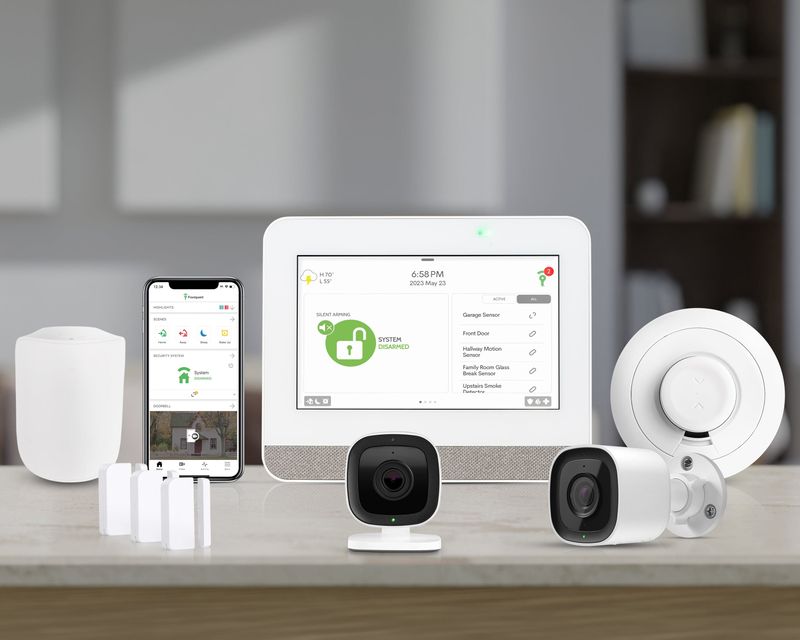Throughout history, countless innovations have shaped our world, yet many people remain unaware of the brilliant women behind some of these inventions. These pioneering women have not only contributed significantly to technology, science, and daily conveniences, but have also paved the way for future generations.
In this blog post, we’ll explore ten remarkable inventions created by women, ranging from household gadgets to crucial scientific breakthroughs. Each of these inventions has had a profound impact on our lives, showcasing the ingenuity and resilience of women inventors. Join us as we uncover the fascinating stories behind these transformative creations.
1. Windshield Wipers

Mary Anderson invented the first functional windshield wipers in 1903 after observing streetcar drivers struggling with rain. She designed a lever-operated rubber blade that cleared rain from the windshield when manually activated. Despite initial skepticism, her invention became standard on all vehicles by 1916. Anderson’s innovation paved the way for modern automated wipers, greatly enhancing driving safety in adverse weather conditions. Her practical approach highlighted the importance of addressing everyday problems with simple solutions. This invention serves as a reminder of how one person’s keen observation and creativity can lead to significant improvements in daily life.
2. Kevlar

Stephanie Kwolek, a chemist at DuPont, invented Kevlar in 1965, a groundbreaking fiber five times stronger than steel. Originally developed while searching for lightweight, strong materials for tires, Kevlar now protects millions in bulletproof vests. Kwolek’s tenacity and curiosity led to this life-saving material, showcasing the power of perseverance in scientific discovery. Her work revolutionized safety equipment, enabling advancements in law enforcement and military applications. Kwolek’s invention exemplifies the unforeseen impacts of research, proving that sometimes the most significant breakthroughs arise from unexpected paths and persistent inquiry.
3. Monopoly Game

In 1904, Lizzie Magie created “The Landlord’s Game,” the precursor to Monopoly, to illustrate the pitfalls of land grabbing and the economic inequity it fosters. Her game aimed to educate players about the importance of fair taxation. Although often overshadowed by Charles Darrow, who popularized a version of the game, Magie’s contribution remains crucial. Monopoly has since become a cultural icon, teaching economic principles in a fun way. Magie’s innovative approach to combining education and entertainment paved the way for future educational games, reinforcing the role of games in learning.
4. Liquid Paper

Bette Nesmith Graham invented Liquid Paper in the 1950s, revolutionizing how people corrected typing errors. As a secretary, she was frustrated with erasing mistakes and experimented with white tempura paint, eventually creating a quick-drying liquid. Her invention became a staple in offices worldwide, improving efficiency and reducing stress for typists. Graham’s journey from secretary to successful entrepreneur underscores the potential of recognizing and solving everyday problems. Her story inspires us to pursue our ideas, regardless of our starting point, reminding us that innovation often begins with small, practical solutions.
5. Home Security System

Marie Van Brittan Brown invented the first home security system in 1966, driven by concerns over neighborhood safety. Her system included a camera, monitors, and a two-way microphone, laying the groundwork for modern security systems. Brown’s invention provided a sense of safety and control, influencing today’s smart security technologies. Her innovative spirit highlights the importance of addressing personal safety concerns through technology. Marie’s system emphasized proactive measures, encouraging the development of user-friendly devices that empower individuals to protect their homes. Her legacy continues to inspire advancements in security solutions.
6. Disposable Diaper

In 1949, Marion Donovan revolutionized childcare with her invention of the disposable diaper. Frustrated by cloth diapers’ inefficiency, she designed a waterproof, disposable alternative using shower curtain material. Despite initial resistance, her creation gained popularity, freeing parents from constant laundry and improving infant hygiene. Donovan’s persistence in solving a personal inconvenience led to a product that changed parenting practices worldwide. Her innovation serves as a testament to the power of addressing everyday challenges. Today’s disposable diapers, evolved from Donovan’s original design, continue to simplify parenting and enhance child care standards.
7. CCTV

Marie Van Brittan Brown, alongside her husband, invented the first closed-circuit television (CCTV) security system in 1969. This invention emerged from a need to increase residential safety and featured video monitoring and alert capabilities. Her pioneering work laid the foundation for modern surveillance systems, transforming security practices globally. Brown’s CCTV innovation showcased the potential of technology in enhancing personal safety and property protection. Her focus on practical safety solutions has inspired the development of advanced security technologies, ensuring her influence endures in today’s sophisticated surveillance systems.
8. The Dishwasher

Josephine Cochrane invented the first practical dishwasher in 1886 to alleviate the hassle of washing dishes by hand. Frustrated by servants breaking her china, she developed a machine that used water pressure to clean dishes efficiently. Her invention garnered attention at the 1893 World’s Fair, revolutionizing kitchen appliances. Cochrane’s innovation addressed a common domestic challenge, paving the way for modern dishwashers in households worldwide. Her determination to solve an everyday problem through mechanical ingenuity highlights the impact of practical inventions. Cochrane’s work continues to influence kitchen technology, underscoring the importance of convenience in appliance design.
9. Computer Algorithm

Ada Lovelace is often recognized as the first computer programmer due to her work on Charles Babbage’s Analytical Engine in the 1840s. She developed algorithms that could be processed by the machine, envisioning its potential for more than mere calculation. Lovelace’s foresight into computing’s capabilities was groundbreaking, laying the groundwork for modern programming. Her mathematical insights highlighted the potential for machines to perform complex tasks, inspiring future generations of computer scientists. Lovelace’s pioneering work underscores the importance of imagination and mathematical prowess in advancing technology, demonstrating the visionary role of women in tech history.
10. The Circular Saw

Tabitha Babbitt invented the circular saw in 1813, inspired by observing the inefficiency of two-man pit saws. She designed a spinning wheel mechanism, dramatically improving sawing efficiency and safety. Babbitt’s innovation revolutionized the woodworking industry, leading to more sophisticated power tools. Her practical solution demonstrated the value of reimagining existing processes to enhance productivity. Babbitt’s work exemplifies how curiosity and observation can drive technological advancements, inspiring future innovations in tool design. Her contribution remains a cornerstone of modern woodworking, emphasizing the continuous quest for improvement in craftsmanship.

Well, hello there!
My name is Jennifer. Besides being an orthodontist, I am a mother to 3 playful boys. In this motherhood journey, I can say I will never know everything. That’s why I always strive to read a lot, and that’s why I started writing about all the smithereens I came across so that you can have everything in one place! Enjoy and stay positive; you’ve got this!

